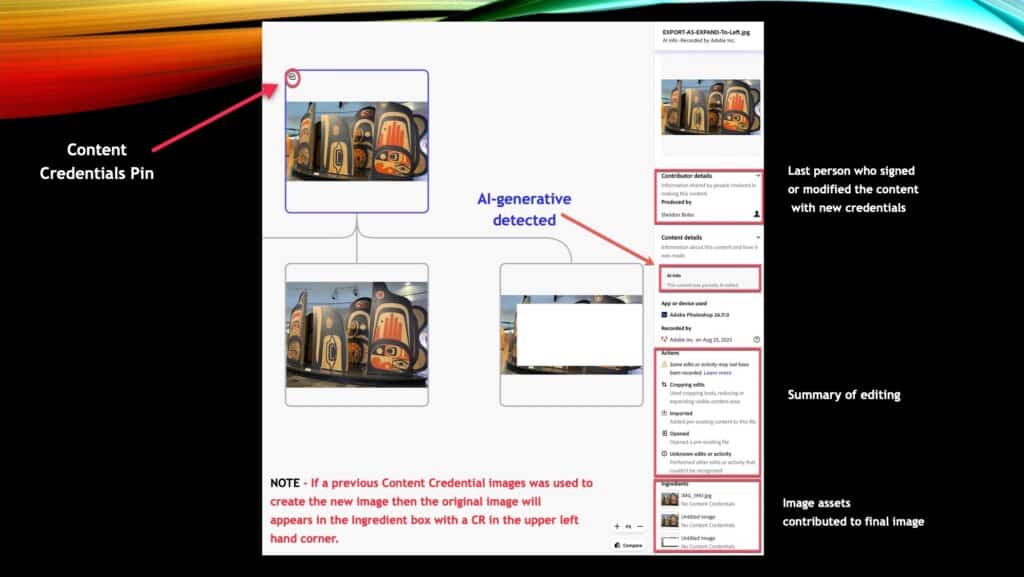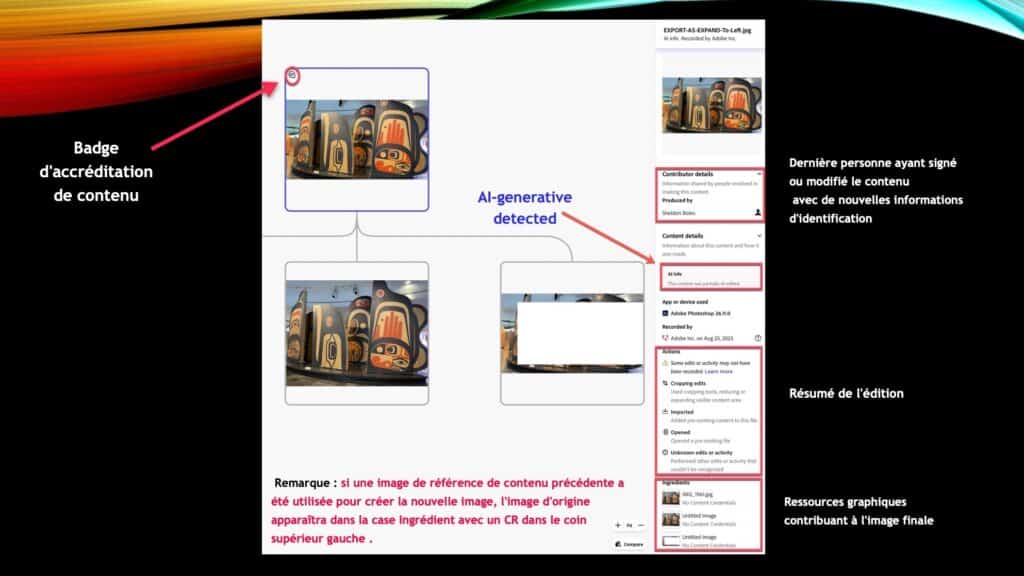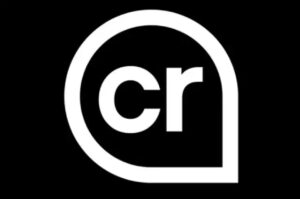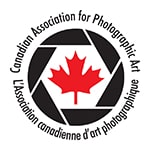CAPA Photography Competitions: Promoting Our Content Credential Model

Executive Summary
The Canadian Association of Photographic Art (CAPA) has adopted the Content Credential model to address the challenges posed by AI-generative tools.
Between now and the end of 2027, we will be promoting this Content Credential model with all camera clubs and photographers. During this time frame, camera clubs and photographers are encouraged to review our Content Credential Model details contained in AI Info option contained within the Competitions dropdown menu.
Until such time that the C2PA’s content credentials become an industry standard, camera clubs and photographers have the option to activate or not activate the Content Credential features within Lightroom and Photoshop.
For interested camera clubs and individual CAPA members, we provide a PowerPoint presentation for camera clubs hosting a Zoom session. A video of this presentation may be available on video.
The Challenge: AI in Photography Competitions
AI-powered photo editing has revolutionized photography, but it has also created confusion in competitive photography. While some AI tools enhance existing image elements appropriately, other AI tools are prohibited because they generate synthetic content that wasn’t originally captured by the photographer.
Important Distinction: These new standards apply specifically to photographs that have been modified using AI enhancement tools, not to entirely AI-generated images created from text prompts. Fully AI-generated images (those created entirely from text prompts without an original photograph) are prohibited from CAPA competitions.
Currently, the photography community faces several problems:
- No unified guidelines on acceptable AI tools for competitions;
- Inconsistent enforcement across different competitions;
- AI detection technology that can’t keep pace with advancing AI capabilities;
- Growing uncertainty among photographers about which AI tools are competition-safe.
Our Solution: Content Credentials (C2PA Standards)
CAPA is adopting the Coalition for Content Provenance and Authenticity (C2PA) standards to provide reliablecompetition image verification. C2PA is an international consortium that develops open, royalty-free technical standards for tracking digital content authenticity.
At present, there are 5,000 committed firms supporting the C2PA standard such as:
| Adobe | AI Labs | Amazon |
| Associated Press | Assoc. of Photographers (UK) | BBC |
| Canon | CBC | Getty Images |
| Globe and Mail | Intel | |
| Leica | Meta | |
| Microsoft | Nikon | Open AI (ChatGPT) |
| Sony | Reuters | Stern |
How Content Credentials Work
Content Credentials embed a signed metadata manifest written into the metadata file during the export process, and records the following provenance details:
- Original creator and capture details;
- Camera or creation/editing software used;
- Complete editing history with timestamps;
- Any AI tools used during post-processing;
- Full chain of custody from creation to submission.
Secure metadata is embedded within the image file and can be authenticated using the verification tool available at contentcredentials.org/verify. The Content Credentials platform can detect any unauthorized modifications to this metadata.
Implementation Guidelines by Software
We have created five (5) documents which outlines what AI tools are acceptable and those not permitted. Documents also include the specific means which the images must be saved or exported to ensure the retention of the image’s metadata.
To support our adoption of the Content Credential Model, we have created five AI Pitfalls guidelines for photographers. These guidelines clarify which AI features are acceptable in submissions and which are not:
- Adobe Photoshop – (English) (French)
- Lightroom Desktop – (English) (French)
- Lightroom Classic – (English) (French)
- Lightroom Mobile – (English) (French)
- Luminar Neo – (English) (French)
- ON1 Photo RAW – (English) (French)
- Topaz Labs – (English) (French)
Verification Process For Content Credential
All photographers and camera clubs can evaluate their images to determine if they have been registered as a C2PA image and if the image contains AI-generative features.
The following steps outline how image can be verified using the contentcredential.org/verify website.
Step 1: Visit contentcredentials.org/verify
Step 2: Upload or drag-and-drop your image
Step 3: Review the complete authenticity report
The verification system accepts these file formats: AVI, DNG, HEIC, HEIF, JPEG, PNG, SVG, TIFF, WebP
The following is an example of what this application analysis will produce.


What Verification Shows
- Original source and creation timestamp
- Software and equipment used
- Complete modification history
- AI tool usage (if any)
- Tamper detection alerts
On the contentcredentials.org/verify resulting window, a registered C2PA image will contain the Content Credential pin which will appear in the upper left hand corner of the image.
The following is an example of Content Credential pin.

AI Detection and Verification Protocols
CAPA uses the Hive AI Detection website, which is an AI classifier tool, to identify images that may have been generated by AI.
Camera club representatives who suspect an image may be fully AI-generated can submit it to the Director of Competition for analysis. The image will be processed through Hive AI Detection, and results will be returned to the requesting representative.
All potential winning entries undergo comprehensive verification and authentication processes through both Content Credentials analysis and AI detection screening. Any image that fails these verification steps will be disqualified from the competition.
Benefits of C2PA for the Photography Community
For Individual Photographers
- Trust and Authentication:Verifies that your images meet competition standards before submission, preventing disqualification due to unacceptable AI-generative use.
- Copyright Protection:The embedded creator information and timestamps strengthen copyright claims and ensures proper attribution.
- Professional Recognition:Platforms such as LinkedIn recognize Content Credentials, enhancing professional credibility.
For Camera Clubs
- Simplified Verification:Check image authenticity through the Content Credentials website before submission to external competitions (specialized AI detection expertise is not required).
Note: Currently limited to images processed in Photoshop and Lightroom.
For Competition Organizers
- Transparent Verification:Organizers are able to access complete image history including capture details, editing timeline, and AI tool usage.
- Efficient Processing:Automated authenticity checking reduces manual review time while ensuring compliance with competition rules.
- Tamper Detection:Built-in security features identify unauthorized metadata modifications and content manipulation attempts.
Implementation Timeline
Phase 1: Education & Dialogue (2026)
- Host webinars and workshops on AI tools, authentication methods, and emerging standards
- Gather ongoing feedback from clubs about practical workflow challenges-
- Continue to monitor industry developments in content authentication across all major software platforms
Phase 2: Pilot Program (2027)
- Introduce and education our photographers on optionally adoptingour Content Credential model for Adobe users who wish to use them
- Continue to work with other global photographic societies to explore the global adoption of Content Credentials
Phase 3: Future Implementation (2028 and beyond)
- Consider proceeding with mandatory authentication requirements for all Adobe products
Immediate Action:
For the current competition cycle, we will continue with our existing verification and authentication processes:
- RAW file and photo forensic verification for finalists
- Reverse image search on all potential winning images
- The Hive AI Detection tool for suspected fully AI-generated images
Getting Started
- Review Guidelines: Download the appropriate guide for your editing software from the CAPA website;
- Update Workflow: Implement Content Credential activation or metadata preservation protocols;
- Test Verification: Use contentcredentials.org/verify to check your processed images;
‘Beta-testing’ of Updated Content Credentials
On September 2, 2025, Adobe announced new beta features for its Content Credential standards, aimed at enhancing digital trust, transparency, and creator control in generative AI and complex media workflows.
Key new features included the beta testing are as follows:
- The verified creator attribution feature allows creators to embed their authenticated professional credentials from LinkedIn, Behance, Instagram, and X into their digital works, creating a direct link between their verified identity and their creative output.
- The beta version lets you add Content Credentials to up to 50 JPG or PNG images at once. Future updates will support larger file sizes and additional formats like video and audio.
- Creators can now set preferences about whether their content gets used to train AI models. This new feature helps protect their choices and may align with upcoming international regulations around AI training opt-outs. (https://contentauthenticity.adobe.com/)
- These credentials work like a permanent digital fingerprint that stays with your content no matter what happens to it – whether someone edits it, takes screenshots, or shares it around. This creates a complete history showing how your content has changed hands and been modified over time.
- Built-in browser tools let anyone check how content has been edited over time and see what credentials were used to create it.
- New watermarking and encryption tools are in development to better protect digital images, using both invisible background markers and visible authenticity signals to verify their origin.
- The latest C2PA technical updates introduce improved manifest formatting, enhanced workflow management, timestamping features, and expanded metadata capabilities.
These updates are aimed at making content provenance more robust and user-friendly for creative professionals, news organizations, and photographic communities.
Closing Comments
Our new Content Credential model was designed to help preserve the integrity of our competitions by providing clear guidelines on acceptable AI tool usage while maintaining the distinction between captured photography and synthetic content. As technology and Content Credentials are adopted by software and IT firms, we will advise all camera clubs and individual CAPA members
If you have any questions or concerns in this matter, please do not hesitate in emailing the writer at competitions@capacanada.ca
Sheldon Boles – FCAPA
CAPA Director of Competitions
